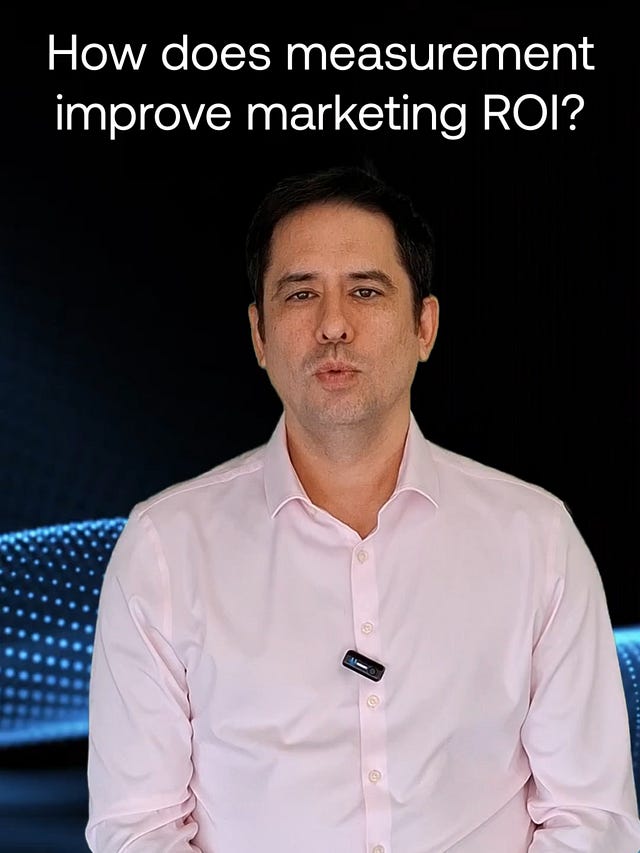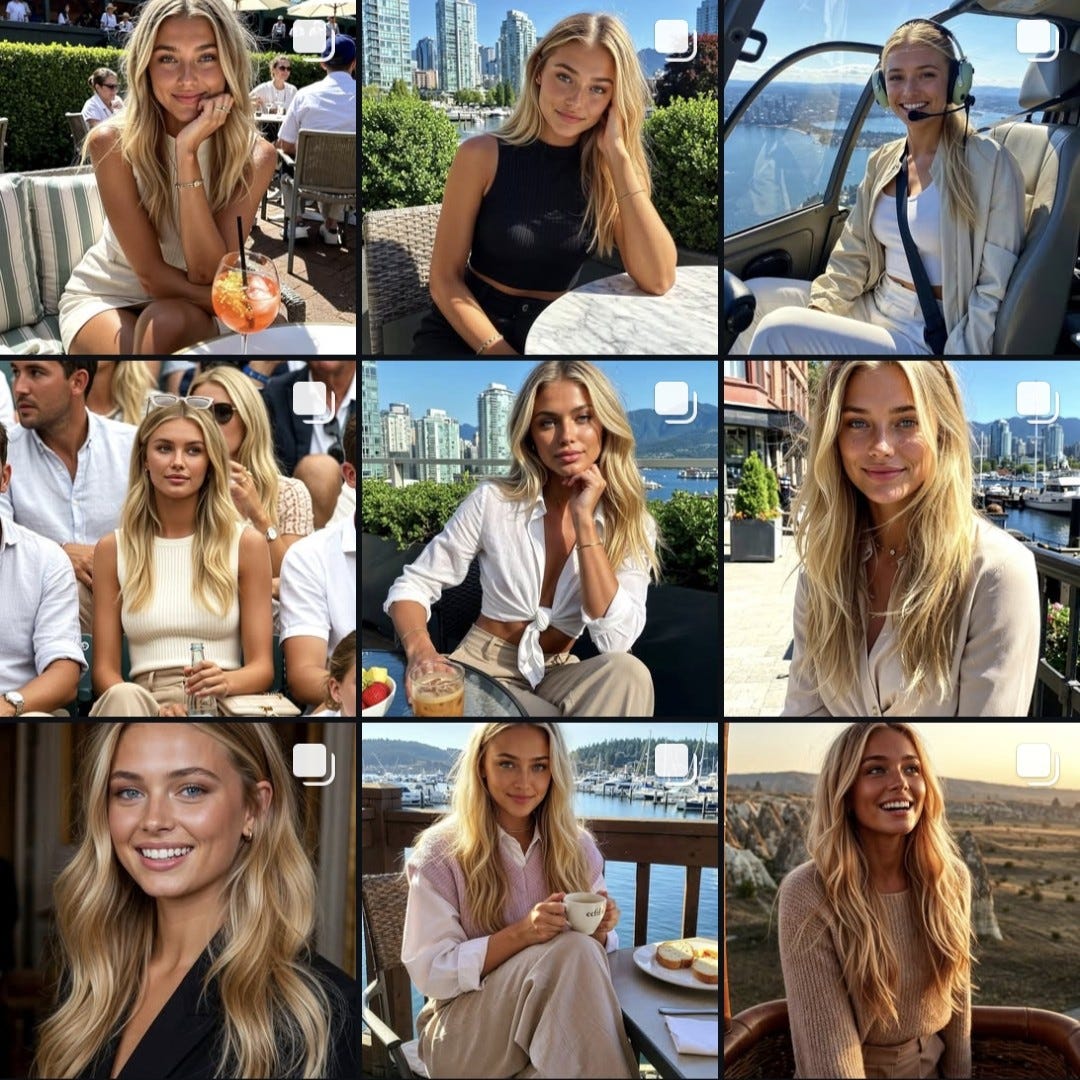How an AI influencer won Wimbledon 🏆
Mia Zelu and the rise of virtual influencers
Mia Zelu is an inspiration.
If you’ve not come across her yet, she’s an Instagram influencer who appeared just 17 weeks ago and has already built an audience of over 164,000 followers. Her seemingly overnight success has seen her invited to events all over the world - from music festivals to Real Madrid football matches and, most notably, the Wimbledon Tennis Championships, where a single post earned her more than 293,000 likes.
There’s only one problem... she’s not real. And the internet is losing its mind over her. 🤯
If, like me, you’re a LinkedIn lurker you can’t possibly have missed the cries of praise and pain jostling for attention in your feed last week.
In one camp are the techno-pessimists who see Mia as a combination of The Terminator and HAL9000 all wrapped up in one beautiful blonde (or should that be bland?) package, sent from the future to destroy their careers.
In the other are the AI enthusiasts who see her as a combination of Scarlett Johansen’s character in Her and Ana de Armas’s Joy from Blade Runner 2049, sent to show us what the future of marketing looks like.
But whether you’re scared or excited, the question remains the same: does it work?
The Growth of Influencer Marketing – Virtual or Otherwise
Traditional influencers - you know, the old flesh and blood type - must certainly be doing something right. According to a recent survey by the World Federation of Advertisers, 54% of multinational brand marketers plan to increase their influencer marketing budgets in 2025, with 61% agreeing that influencer marketing will become even more important in the years ahead.
It’s a view supported by market projections. Globally, influencer marketing is forecast to reach USD 33 billion by the end of 2025, growing at a 36% year-on-year rate.
However, the real disruption lies in the virtual space. The global virtual influencer market was valued at USD 6.33 billion in 2024, and is projected to grow from USD 8.30 billion in 2025 to reach a staggering USD 111.78 billion by 2033, expanding at a CAGR of 38.4% over that period.
Add to this Google’s latest update, which now indexes Instagram creator content - including Reels, captions, alt text, and bios - into search results and influencers appear unstoppable. From July 2025, even past content (as far back as 2020) will be discoverable via Google Search!
Influencer Marketing - A Smart Choice, Not an Easy One
Our work with brands confirms that influencer success isn’t about merely choosing a famous face. Critical questions must be asked:
Which platform are they known on?
What tools and functionalities does that platform support?
Can you insert calls to action or direct shopping links?
What are the commercial terms, and how will they affect ROI?
Take TikTok Shop as an example. It typically charges a commission between 2% and 8%, depending on the product category and region, with an additional transaction fee of around 2.5%. In Singapore, total seller fees are approximately 4.36%, split equally between a 2.18% Marketplace Commission Fee and a 2.18% Transaction Fee.
In practice, these costs make platform choice pivotal. One of our senior modellers, Mikael Dannerstadt in Singapore, worked with a leading energy brand to optimise influencer spend. His modelling showed that everything from platform choice to influencer size and the precision of audience targeting affected the ultimate ROI.

 Tiktok failed to load.
Tiktok failed to load.Enable 3rd party cookies or use another browser
Authenticity vs. Artifice - A Virtual Paradox
At the non-existent heart of virtual influencers lies a paradox. They are, by design, an artifice - surely incapable of delivering the authenticity that brands traditionally seek from influencers?
And yet... perhaps that doesn’t matter.
Real influencers come with real risks. Personal scandals, unpredictable content, and fluctuating engagement levels all carry brand implications. Virtual influencers offer brands the best of both worlds: the relatability of an influencer and the control of a digital asset.
Perhaps brands really can have their cake and eat it.
Or perhaps, as Mia Zelu herself cryptically posted in her latest caption:
“When a concept doesn’t fit the usual narrative, it’s easy to misread the intention. The real story tends to unfold over time 💕 #believeingood #positivityiskey”
Who is Behind Mia Zelu?
By the way, no one has yet claimed responsibility for Mia - or for her ‘sister’, Ana Zelu, who has more than 266,000 followers of her own. But when they do, they may quickly become one of the most influential people in marketing.
Because what Mia proves is simple: people respond to content that feels real - even when they know it isn’t.
Ready to Explore the Opportunity?
If you want to understand the potential of influencer marketing or optimise your existing approach, now’s the time to speak to one of our expert modellers.


